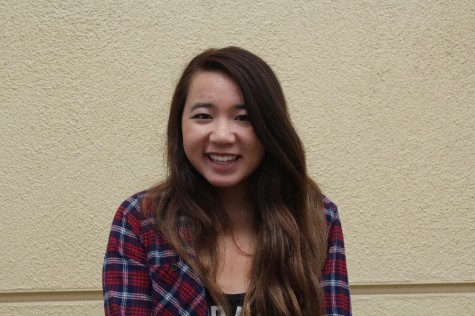Photoshopping, digital alteration, image manipulation — the fact that so many images of women are “perfected” with the help of technology is a commonly known issue.
Many people are aware of the possibility of image alterations, but not everyone realizes exactly how much these images are changed to fit some seriously un-human and unrealistic ideals that we view over and over.
Not everyone understands that it isn’t just fashion magazine covers that feature drastically photoshopped images. It’s TV. It’s videos. It’s your favorite brand online. It’s everywhere.
While the vast majority of images of women are being digitally altered, so are our perceptions of normal, healthy, beautiful, and attainable.
“I wasn’t aware how much photoshopping was actually used in the media. It’s quite disturbing and should really be controlled,” said freshman Megan Tao.
One of the main strategies used to reinforce and normalize a distorted idea of “average” is media’s representation of women as extremely thin, meaning much thinner than the actual population or what is physically possible for the vast majority of women.
This is done through consistent use of models and actresses that are underweight or extremely thin, or by making the models and actresses fit their idea of ideal thinness and beauty through digital manipulation both on screen through computer-generated imagery (CGI) and in print media.
“It just adds to the self-consciousness that most girls already feel enough of today. I find myself constantly comparing myself to the girls on the covers of magazines who I’ll never look like because they are so edited and photoshopped,” said freshman Connie Yi.
Essentially, the feminine ideal is tanned, healthy slenderness, with no unsightly bumps, bulges or cellulite, and bodily and facial perfection.
This unrealistic form is consistently represented across almost all media forms, along with blemish-free, wrinkle-free, and even pore-free skin, thanks to the wonders of digital manipulation as an “industry standard” that is openly endorsed and defended by magazine editors and media makers the world over.
The February 2014 cover of Seventeen featured “Pretty Little Liars” star Troian Bellisario, who opened up about her past problems with an eating disorder. The teen magazine decided to feature that as a teaser on the cover, right above a much larger headline for “Get an Insane Body — It’s hard, but you’ll look hot!”
This juxtaposition of providing an outlet for a young actress to open up to young fans about a disorder that “ripped her life apart” next to a story promoting the thin ideals that drive many girls and women to such extremes in eating is appallingly irresponsible.
Unfortunately, this case study is pretty representative of thousands more that appear in magazines, on billboards, in advertisements, in stores and everywhere else you can think of every single day.
Since we’ll see millions more images of women in media than we’ll ever see face-to-face, those images form a new standard for not just “beautiful,” but also “average” and “healthy” in our minds. When women compare themselves to a standard of beautiful, average, and healthy that simply doesn’t exist in real life, the battle for healthy body image is already lost.
While representations of women’s bodies across the media spectrum have shrunk dramatically in the last three decades, rates of eating disorders have skyrocketed . There has been a 119 percent increase in the number of children under age 12 hospitalized due to an eating disorder between 1999 and 2006, the vast majority of whom were girls, the American Academy of Pediatrics reported in 2010.
“I’ve honestly stopped reading magazines. Photoshopping has taken these unreal ideals to a scary new level. What we see in media, and what we may be internalizing as normal or beautiful, is anything butnormal or beautiful. It’s fake,” said sophomore Gaby Belarde.









